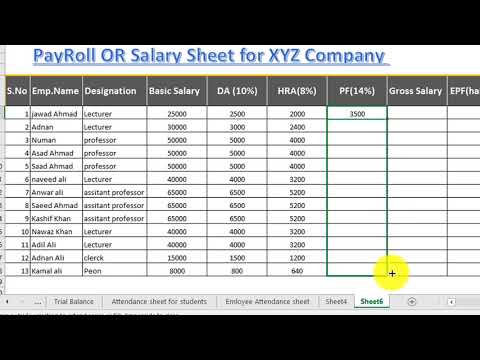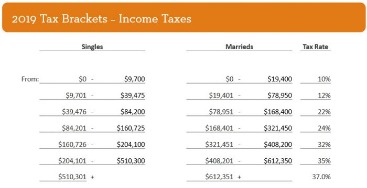
One of these concepts is the question about gross profit vs net profit vs operating profit. It’s crucial that you know the difference between these relevant figures. Profit margins are significant because they provide insights into different aspects of a company’s performance and financial health.

Bear in mind that the amount alone won’t help you to differentiate between gross profit vs net profit. Net income is the most important financial metric, reflecting a company’s ability to generate profit for owners and shareholders. With Finmark, you can create and share financial plans, manage burn rate, track profit, and forecast revenue — all without pesky, templated spreadsheets. Keep reading to learn why this is the case and how you can change things up to ensure your business starts or stays profitable. Investors usually look at both gross profit and net profit when making investment decisions. These items are deducted from operating profit before net profit is reached.
Finish Your Free Account Setup
Each metric provides valuable financial information recorded by accountants or bookkeepers. Once the month closes, founders can access financial statements that list both totals. The three types of profit, which we have discussed, are three stages of the Profit.
Some industries are high operating profit margin industries, while others are low operating profit margin industries. Therefore, it is impossible to compare businesses in different industries when looking at operating profit margins alone. To calculate operating margin, you first need to know your business’s operating income. That’s total revenue minus all operating expenses, including COGS, as well as depreciation and amortization. In turn, operating margin highlights how well company leaders manage the expenses that are within their control.
Premium Investing Services
The tax section has a profit and loss tab that shows the taxable profit as well as the taxable income and allowable expenses. Gross profit also refers to total sales (also known as revenue or turnover) minus the total cost of sales. It’s vital to understand your gross profit so that you are not selling at a loss. For instance, unstable profit margins can indicate mismanagement, while declining profit margins could indicate rising competition or a lack of product differentiation.
- Net income and net profit are the same single number that represents a specific type of profit.
- If there is a spike or dip in these trends, management can delve into the underlying financial information to determine specific causes and take corrective action.
- EBIT, or earnings before interest and taxes, is sometimes used as stand-in terminology for operating income.
- Before you grow your net profit margins, you need to have a baseline of your current profits and a method for consistently measuring them.
- Once you show gross income and operating income, the final step on the statement is the calculation of net profit, or income.
- Gross profit is a fundamental financial metric that provides critical insights into a business’s operational efficiency and its ability to generate profits.
In any business, enhancing gross profit is a key objective to boost overall profitability and stimulate growth. The greater the gross profit, the more capital a company has to cover operating expenses and why isn’t comprehensive income comprehensible invest in its future. The income statement, also known as the profit and loss statement, is a financial report that provides a summary of a company’s revenues, costs, and expenses over a specific period.
Understanding Operating Margin
For business owners, net income can provide insight into how profitable their company is and what business expenses to cut back on. For investors looking to invest in a company, net income helps determine the value of a company’s stock. Operating profit does not account for the cost of interest payments on debts, tax expenses, or additional income from investments.

In other words, how effective a company is at generating profits from its sales. This is a useful performance indicator when making comparisons to similar companies. The average total market operating profit margin is 13.52%, with the e-commerce industry at 5.85%. This can change drastically based on net sales or even streamlining operational processes to lower costs. Walmart’s operating profit margin dropped from 4.53% to 3.34% over the course of the year from 2022 to 2023.
Using ROI as a Performance Measure
Net income and net profit are the same single number that represents a specific type of profit. They provide insights into different aspects of a company’s operations. Both gross profit and net profit are essential in measuring the profitability of a business. Both gross profit and net profit are important in measuring the profitability of a business. Non-operating expenses are all the other expenses not part of COGS and operating expenses.
NSSC INVESTOR DEADLINE: Robbins Geller Rudman & Dowd LLP … – Business Wire
NSSC INVESTOR DEADLINE: Robbins Geller Rudman & Dowd LLP ….
Posted: Mon, 04 Sep 2023 13:38:00 GMT [source]
Finally, external market conditions can play a big role in influencing gross profit. Factors such as competition, market demand, and economic conditions can affect both the prices a business can charge and the volume of sales it can achieve. For instance, in a strong economy, businesses may be able to increase prices or sell higher volumes, both of which can enhance gross profit. While operating expenses (also known as OPEX) are crucial to your business—you can’t operate without them! Gross profit is the difference between sales revenue and cost of goods sold. On the other hand, net profit is the final profit after all expenses and incomes of the business are accounted for.
Business owners should know that an increase in net profit doesn’t necessarily mean that your cash balance will go up. Similarly, you may not have paid the supplier for some of the expenses that are accounted for. Both these transactions will affect your net profit, but will not have an impact on your cash balance. Net sales are calculated by deducting discounts from the sales amount. You also need to reduce the sales amount if customers have returned any goods.
The Income Statement
Another way to look at net profit margin is by using a net profit margin ratio. The net profit margin ratio is just another way to measure a company’s profitability. In this blog post, we’ll take a closer look at the difference between gross profit and operating income and why those numbers are beneficial for founders to know. For this subject, profit and income hold the exact definition, with “gross” and “operating” being the critical difference.
- Gross profit is the revenue from sales minus the cost of goods sold (COGS).
- This is an important metric because it indicates to investors the profitability of a business and offers a convenient way to compare competing businesses or different industries.
- A higher gross margin percentage indicates that a company can make a reasonable profit on sales, as long as it keeps its overhead costs under control.
- Gross profit and net profit sound like jargon, but they are both important measures of how well your business is doing.
- Studying your gross profit vs net profit numbers can provide you with the information you need to improve your business performance.
Gross profit is calculated by subtracting the cost of goods sold (COGS) from the total revenue. Total revenue, often referred to as sales, is the total receipts from selling a firm’s goods or services to its customers. On the other hand, the COGS includes all the direct costs related to the production of the goods sold by a company or the services it provides. Gross profit margin shows the percentage of revenue after subtracting the cost of goods sold involved in production. The cost of goods sold is the amount it costs a company to produce the goods or services that it sells.
What is the approximate value of your cash savings and other investments?
Net income is the bottom line, or the company’s income after accounting for all cash flows, both positive and negative. It’s a relatively simple ratio based on two key metrics included on a company’s income statement. The first, total revenue (also called net sales), is gross sales minus any returns or discounts of the items you sell. The second is cost of goods sold (COGS), which is any direct costs of production including raw materials and manufacturing labor. Lastly, the net profit margin provides an understanding of a company’s overall profitability. It shows how much of every dollar of revenue is actually kept as profit, providing a clear picture of the company’s overall financial health.
